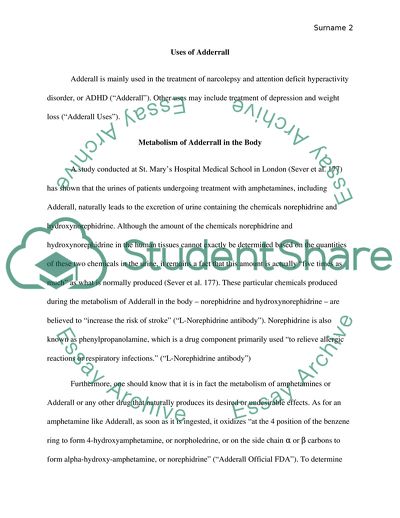Cite this document
(The Chemistry of Adderrall Research Paper Example | Topics and Well Written Essays - 1250 words, n.d.)
The Chemistry of Adderrall Research Paper Example | Topics and Well Written Essays - 1250 words. https://studentshare.org/chemistry/1745787-organic-chemistry-and-adderral-with-structure-of-chemical-compounds
The Chemistry of Adderrall Research Paper Example | Topics and Well Written Essays - 1250 words. https://studentshare.org/chemistry/1745787-organic-chemistry-and-adderral-with-structure-of-chemical-compounds
(The Chemistry of Adderrall Research Paper Example | Topics and Well Written Essays - 1250 Words)
The Chemistry of Adderrall Research Paper Example | Topics and Well Written Essays - 1250 Words. https://studentshare.org/chemistry/1745787-organic-chemistry-and-adderral-with-structure-of-chemical-compounds.
The Chemistry of Adderrall Research Paper Example | Topics and Well Written Essays - 1250 Words. https://studentshare.org/chemistry/1745787-organic-chemistry-and-adderral-with-structure-of-chemical-compounds.
“The Chemistry of Adderrall Research Paper Example | Topics and Well Written Essays - 1250 Words”. https://studentshare.org/chemistry/1745787-organic-chemistry-and-adderral-with-structure-of-chemical-compounds.


